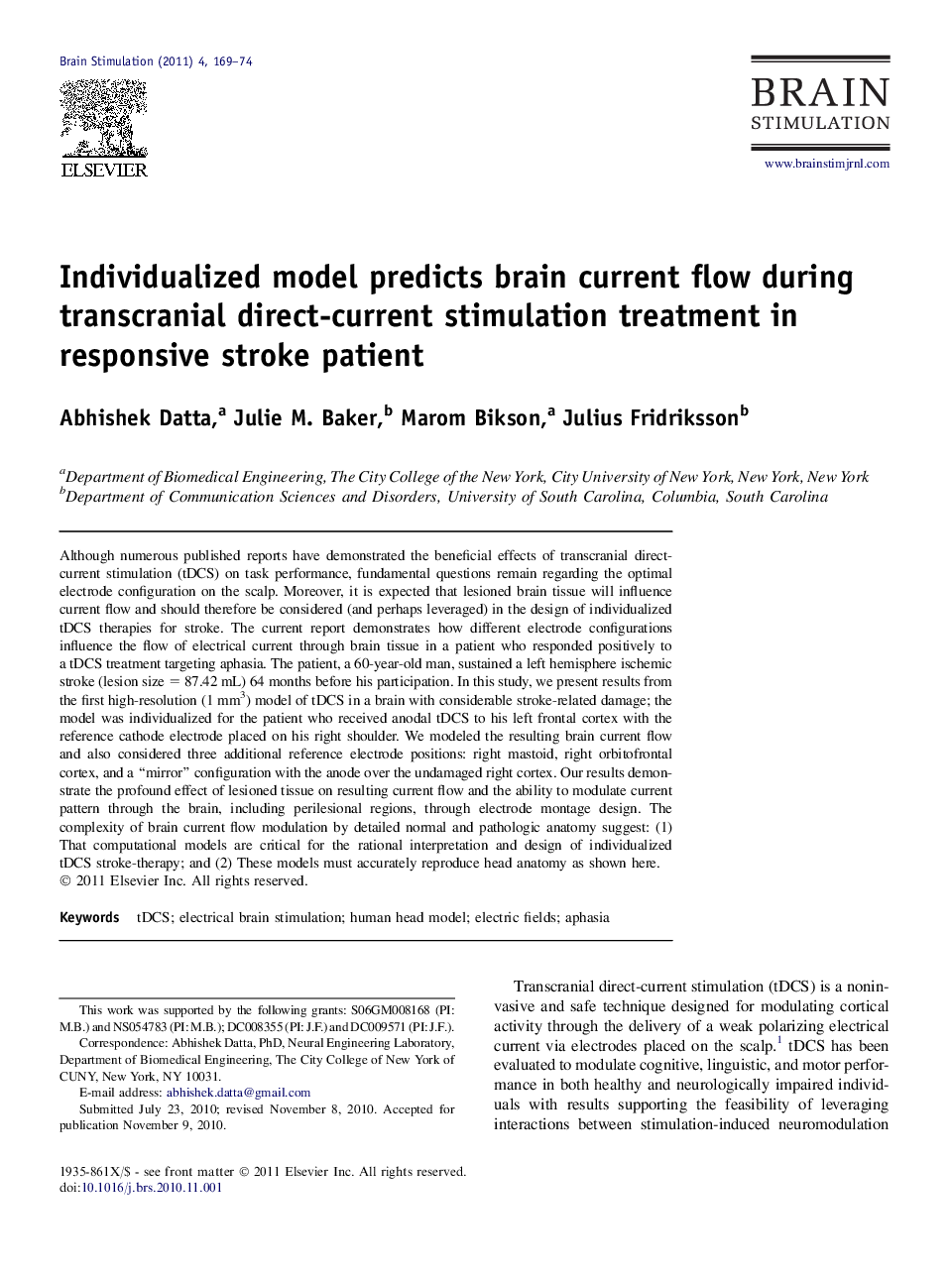| کد مقاله | کد نشریه | سال انتشار | مقاله انگلیسی | نسخه تمام متن |
|---|---|---|---|---|
| 3039167 | 1184690 | 2011 | 6 صفحه PDF | دانلود رایگان |

Although numerous published reports have demonstrated the beneficial effects of transcranial direct-current stimulation (tDCS) on task performance, fundamental questions remain regarding the optimal electrode configuration on the scalp. Moreover, it is expected that lesioned brain tissue will influence current flow and should therefore be considered (and perhaps leveraged) in the design of individualized tDCS therapies for stroke. The current report demonstrates how different electrode configurations influence the flow of electrical current through brain tissue in a patient who responded positively to a tDCS treatment targeting aphasia. The patient, a 60-year-old man, sustained a left hemisphere ischemic stroke (lesion size = 87.42 mL) 64 months before his participation. In this study, we present results from the first high-resolution (1 mm3) model of tDCS in a brain with considerable stroke-related damage; the model was individualized for the patient who received anodal tDCS to his left frontal cortex with the reference cathode electrode placed on his right shoulder. We modeled the resulting brain current flow and also considered three additional reference electrode positions: right mastoid, right orbitofrontal cortex, and a “mirror” configuration with the anode over the undamaged right cortex. Our results demonstrate the profound effect of lesioned tissue on resulting current flow and the ability to modulate current pattern through the brain, including perilesional regions, through electrode montage design. The complexity of brain current flow modulation by detailed normal and pathologic anatomy suggest: (1) That computational models are critical for the rational interpretation and design of individualized tDCS stroke-therapy; and (2) These models must accurately reproduce head anatomy as shown here.
Journal: Brain Stimulation - Volume 4, Issue 3, July 2011, Pages 169–174